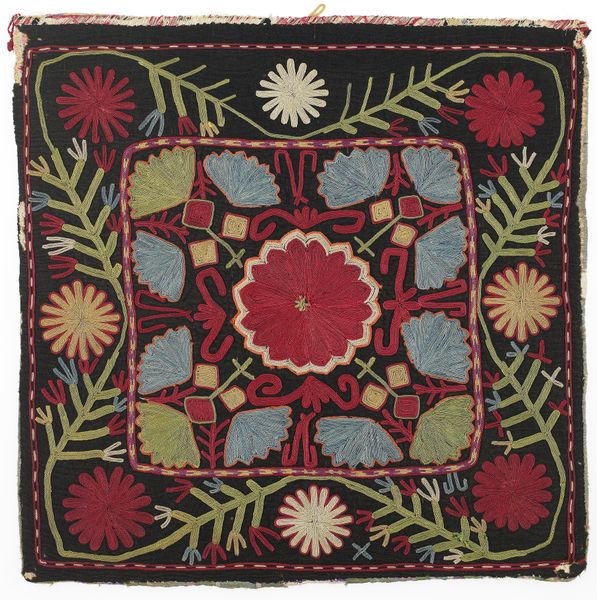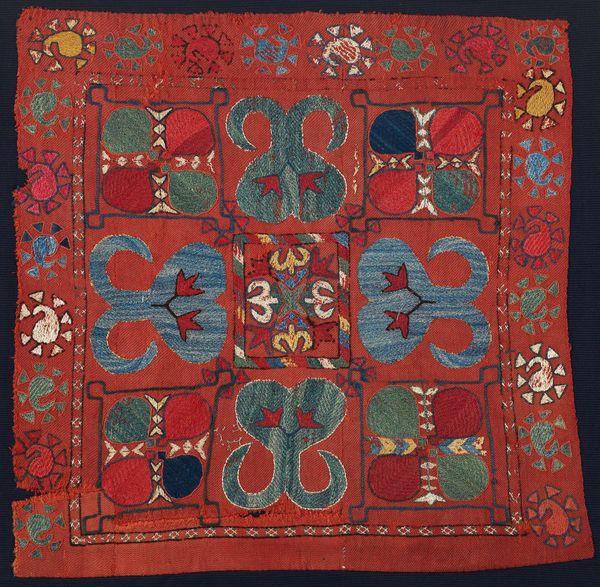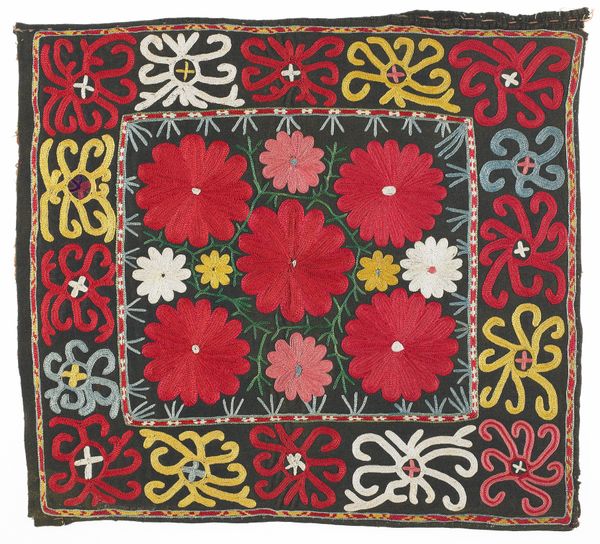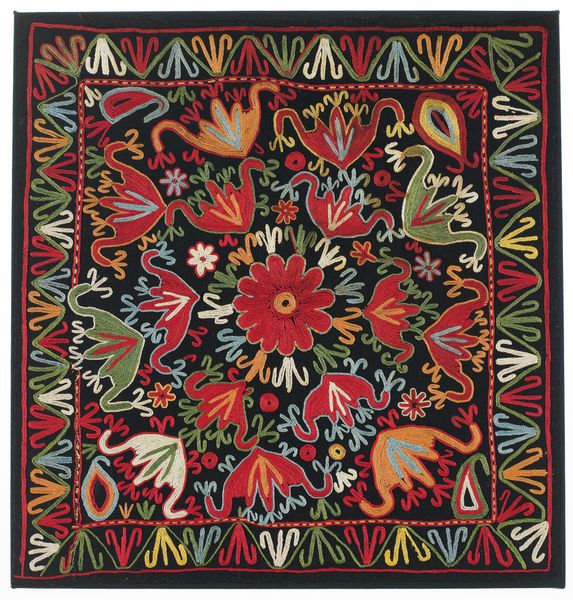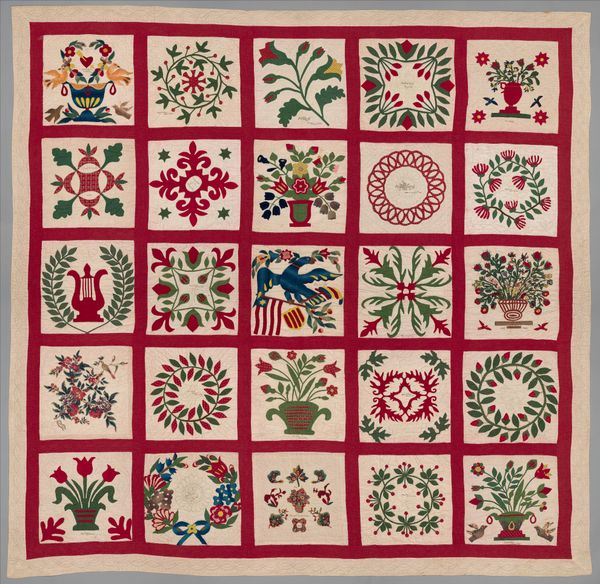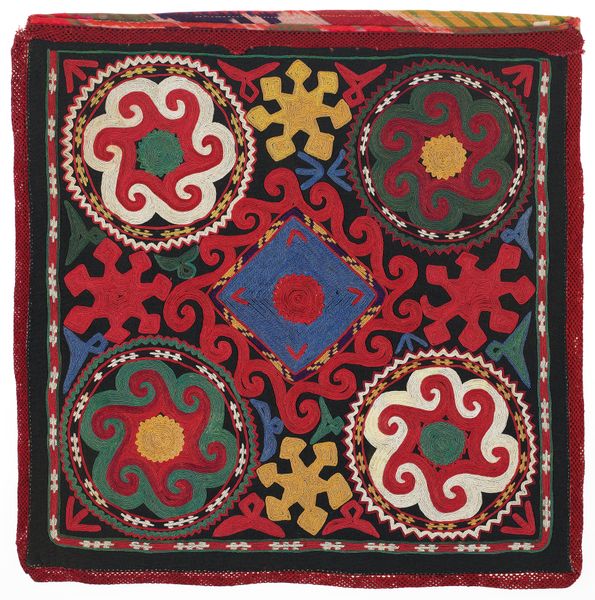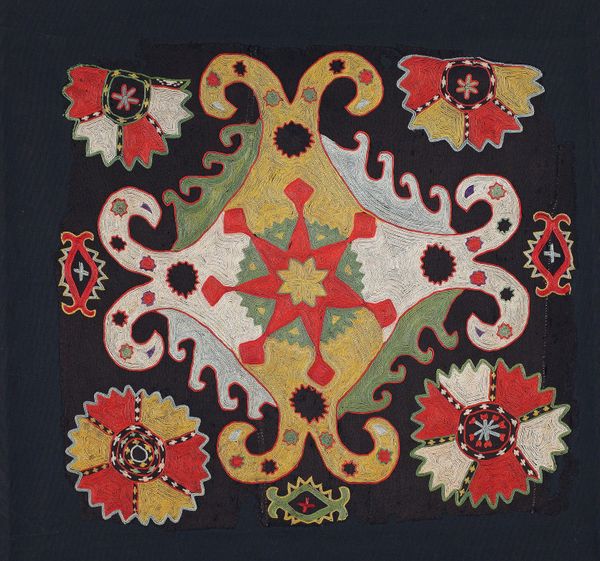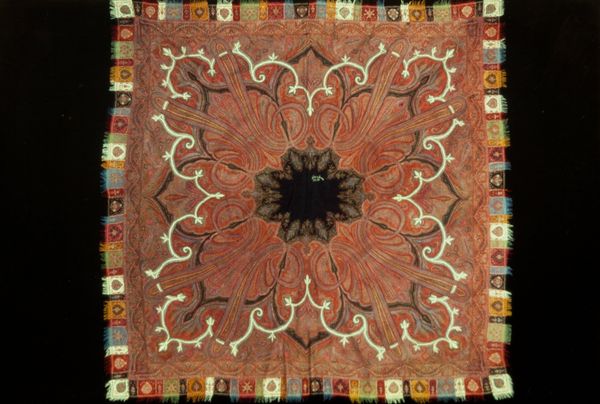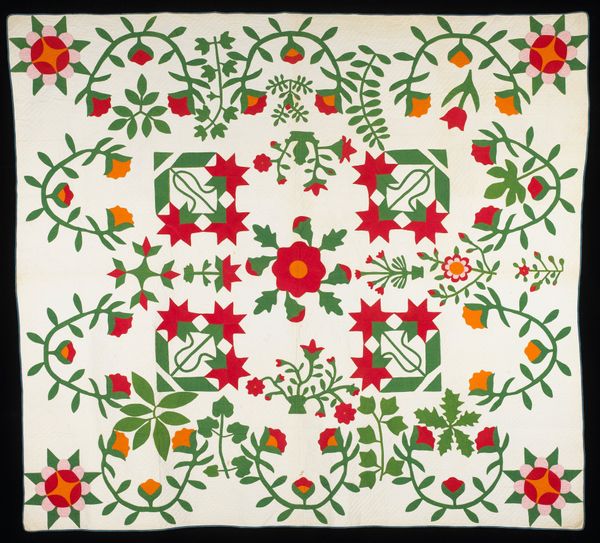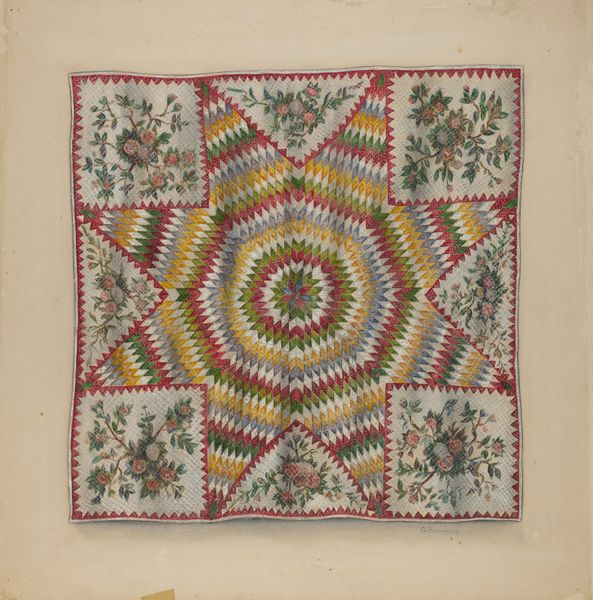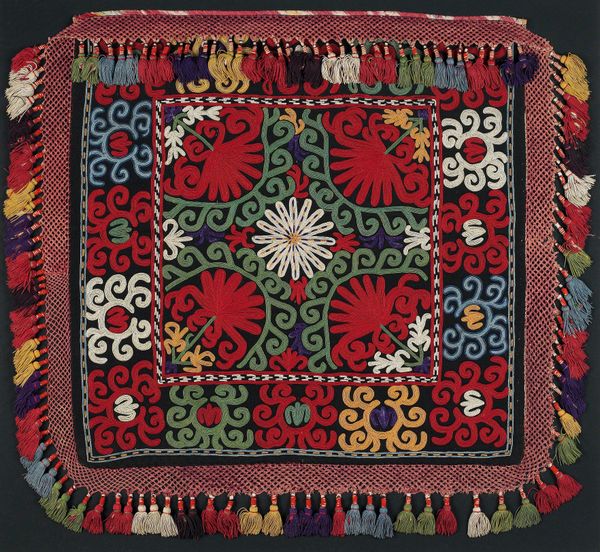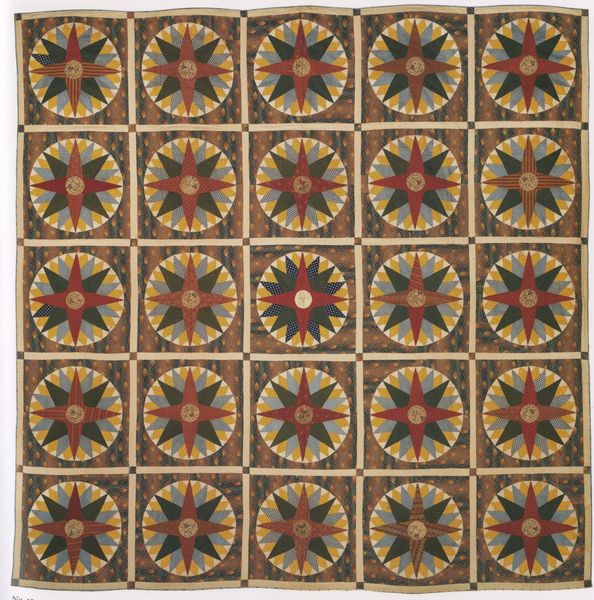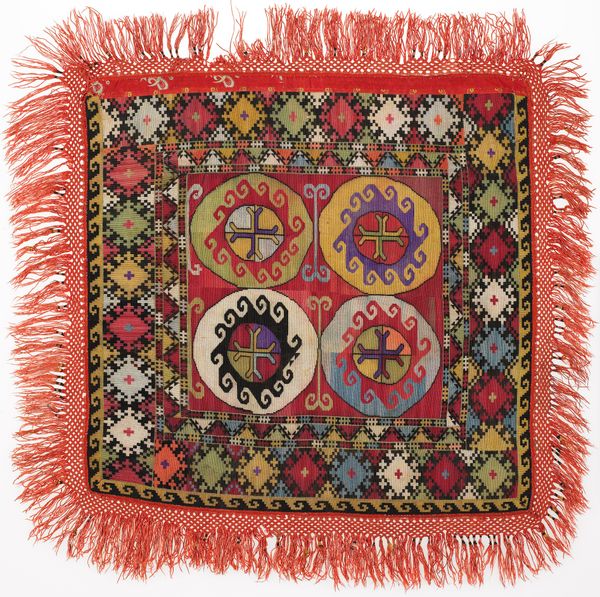
fibre-art, silk, textile
#
fibre-art
#
silk
#
asian-art
#
textile
#
organic pattern
#
geometric
Dimensions: 18 3/4 x 19 in. (47.63 x 48.26 cm)
Copyright: Public Domain
Curator: Looking at "Ilgich," dating from the early 20th century, I’m struck by the immediate feeling of warmth and joy it evokes. Editor: Yes, there’s something quite arresting about the composition. At first glance, it appears so simple – a grid populated by floral motifs. But against the deep black background, it takes on a whole different dimension, becoming almost dreamlike. It’s visually vibrant but simultaneously subdued, a kind of bold intimacy. Curator: Absolutely, and consider the history of textiles, these works of art—often made by women, become visual languages. Think about how each element is carefully chosen and placed. We know that “Ilgich” is crafted from silk, and these embroidered silk panels served an important cultural function, they are an essential part of a bride's dowry and an element of celebratory ceremonies, right? It’s meant to ensure the couple’s prosperity, long life, and overall well-being. Editor: That's fascinating! Knowing the history and context immediately reshapes my understanding of this weaving, it becomes an emblem of familial hopes and expectations. Considering feminist theory and this panel as part of the bride's dowry challenges historical stereotypes about domestic roles and challenges that through artistry and care. These material objects transcend mere craft—becoming encoded with socio-political meaning through cultural and historical traditions. Curator: I agree! If you look closely, you will notice a pattern in the placement and repetition of motifs within the artwork, it provides an interesting glimpse into the inner world, emotional stability, and resilience. Organic motifs create an interesting blend of emotional stability that has a significant symbolic language of domestic harmony, security, and happiness in families, thus strengthening communal bonds and social unity. Editor: You are right to remind us of that communal element. So often, art history focuses on the individual genius, but pieces like "Ilgich" remind us of collaborative spirit of many hands. It's so important to understand that an artwork also encodes a form of shared cultural DNA. How can we look beyond formalism, using this object as a jumping-off point to study cultural heritage or the history of craftswork? Curator: Considering these tapestries as tools, instruments of solidarity is important and your attention towards intersectionality, identity and the reevaluation of craft opens new opportunities of investigation for scholars, art historians, artists and audiences interested in the artistic legacy and symbolic dimension. Editor: So next time you see any floral patterns or embroidery remember all the complex ideas embedded there: hope, domesticity, and quiet rebellion too. Curator: Precisely! Thank you. It makes one consider all the hands, known and unknown, that have shaped our shared visual culture.
Comments
No comments
Be the first to comment and join the conversation on the ultimate creative platform.
